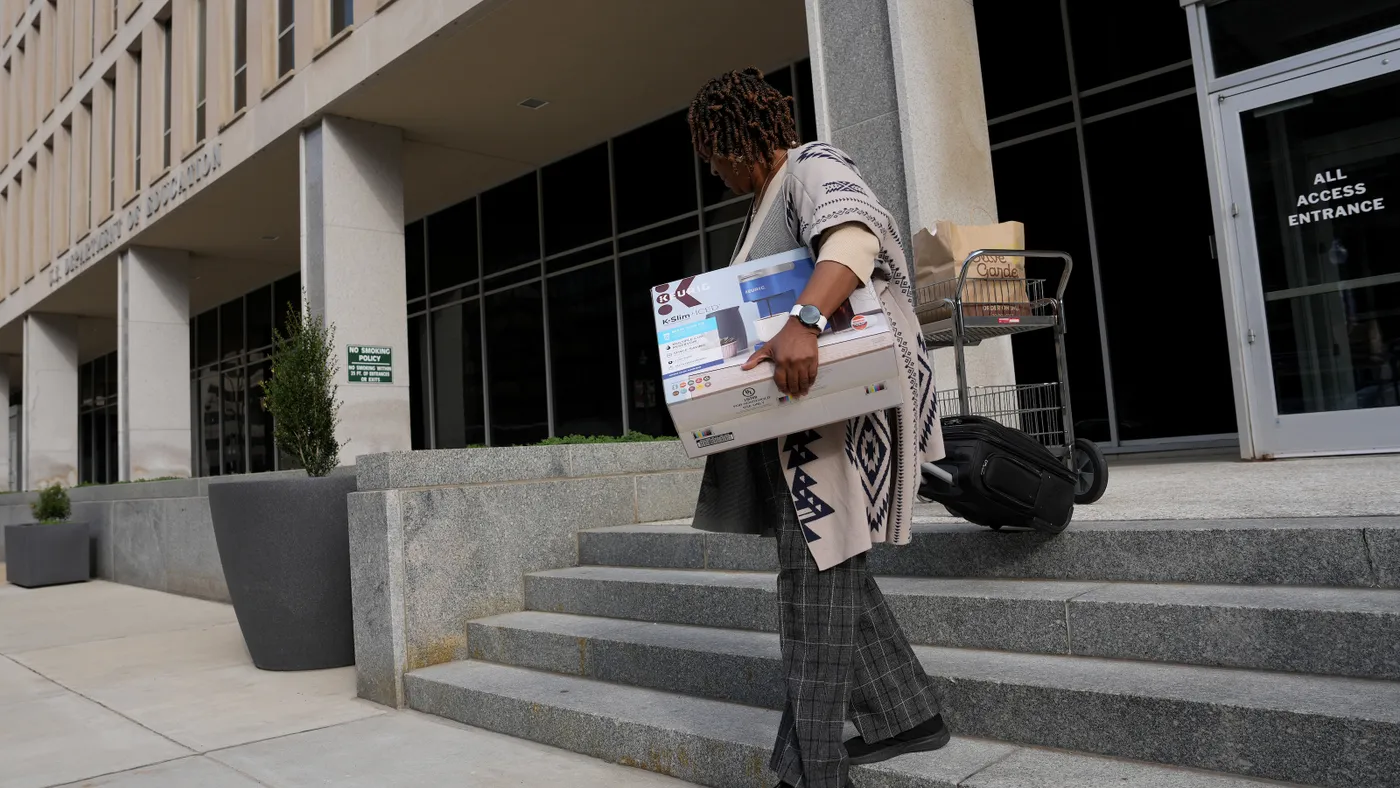President Donald Trump's promise to dismantle the U.S. Department of Education was long heralded. Dating back to his first term, the vow was loudly and oft-repeated by candidate Trump on the campaign trail in 2024.
But while the plan went nowhere during his first time in the White House, it has come to fruition through a slew of executive actions since his inauguration in January.
What began with abruptly canceled education grants in February escalated with the confirmation of U.S. Education Secretary Linda McMahon on March 3 and her promise of "our department's final mission" that same day. The culmination came in massive layoffs on March 11 and a Trump executive order a week later instructing McMahon to close the department “to the maximum extent appropriate and permitted by law.”
A handful of the Trump administration’s actions — including last week's order — have already been challenged in court. But in the meantime, their impacts are tangible in everything from students' civil rights protections to funding for teacher grants.
K-12 Dive obtained an organizational chart from the Education Department detailing the offices impacted by the March 11 layoffs, as well as a list of about 970 union employees out of 1,300 employees who were let go, which offices they had been employed in and their positions. While the list of employees isn't comprehensive, it gives a general idea of where cuts were concentrated — and what that might mean for education in the long run.
Based on those documents, here are eight visuals to help understand Trump's multiphased gutting of the Education Department and its widespread impact:
The March 11 layoffs were preceded by cuts to over $1 billion in grant funding. Research grants housed in the National Center for Education Statistics were on the chopping block, as were teacher training grants that the administration called "divisive."
The teacher grants impacted include the Supporting Effective Educator Development Grant Program, the Teacher Quality Partnership Program, and the Teacher and School Leader Incentive Program. These cuts would later be successfully challenged through at least two lawsuits. This week, Trump filed an emergency application with the U.S. Supreme Court challenging the lower court ruling and seeking the immediate cancellation of $65 million in teacher training grants it says advances diversity, equity and inclusion initiatives.
Former National Center for Education Statistics employees also confirmed to K-12 Dive that research grants related to student assessments were cut — a move that will likely result in a “barebones” approach to congressionally mandated tests like the Nation's Report Card.
After the initial cuts to grants — and on the night of McMahon's March 3 confirmation — employees were given an 11:59 p.m. ET deadline to voluntarily accept a $25,000 separation agreement in an effort to downsize the agency’s workforce. According to a later announcement by the department, about 600 employees took that offer leading up to the March 11 layoffs.
The layoffs would bring the total number of employees impacted by the reduction in force — part of McMahon's "final mission" for the Education Department — to 1,900, or nearly half of its 4,133 count.
FSA, OCR, and IES hit hard in March 11 layoff
On March 11, the administration laid off nearly 1,300 employees across various offices within the Education Department. Among offices losing the most people were Federal Student Aid, which students depend on to determine their eligibility for federal grants and loans for college. The move is the opposite of a recommendation made by the Government Accountability Office last year — following a botched FAFSA rollout — to "plan for and ensure hiring of sufficient staff to increase capacity" in the FSA office.
The Institute for Education Sciences, home to the National Center for Education Statistics and oversight for the Nation's Report Card, was cut down by over a hundred staff and left NCES with a skeletal staff of a handful.
And the English Language Acquisition office was completely decimated, with all of its some dozen unionized employees laid off, according to the Education Department's organizational chart. That move came less than two weeks after Trump signed an order making English the official language of the United States.
Another Education Department arm significantly impacted was the Office for Civil Rights, which enforces laws that protect students' civil rights. The reduction there comes after the Biden administration pleaded to Congress for an increase in funding and staff to address a case backlog, escalated by Title VI complaints based on shared ancestry or ethnicity in light of the Israel-Hamas war. The Trump administration has acknowledged the backlog but halved the office's headcount rather than increasing staff.
7 OCR regional offices closed, affecting half the nation
The civil rights arm also lost seven of its dozen regional office.
OCR is responsible for keeping schools in compliance with civil rights laws and handles investigations that in the past often took months or even years to complete. Those investigations, among other things, ensure equal access to education for sexual assault survivors, students with disabilities and students from all races and ethnicities.
Attorneys and equal opportunity employees were most common positions cut
Out of hundreds of OCR employees fired, a significant number were civil rights attorneys and equal opportunity employees, leaving the office with a skeletal crew to oversee more than 12,000 currently open investigations. At least 200 employees in total were let go.
These attorneys carried out the majority of OCR's work, including determining case outcomes and sometimes helping to develop policy guidance.
Multiple lawsuits have since challenged the Trump administration's decision to pare down OCR specifically, alleging that the layoffs will render the office unable to do its job. One challenge, filed by parents on March 14 claims the move would deny families the right to a complaint and investigation process.
Closing of 7 OCR regional offices impacts more than half of open cases
The Trump administration has said that it will continue to fulfill its legal obligations and is fast-tracking the resolution of its caseload through means other than full investigations.
State breakdown of closed OCR regional offices shows 30 million students impacted
Overall, the shuttering of more than half of OCR offices will impact nearly 60,000 public schools and over 30 million K-12 students, according to data drawn from NCES and cross-referenced with the locations of the closed offices.
National Center for Education Statistics is among Education Department offices decimated
The impact of layoffs extends to NCES, whose staff were all let go other than a few people in leadership positions.
The data center traces its existence to an 1867 law establishing a federal statistical agency to collect, analyze and report education data. Today, it collects information on the condition of education and helps education policymakers understand areas of need and impact of decisionmaking. Its shuttering rocked the education and statistics world.
Those laid off say the handful of employees left in the office are not equipped to oversee the slew of data the center collects and analyzes, including data on student achievement through the National Assessment for Educational Progress and the Program for International Student Assessment.
















